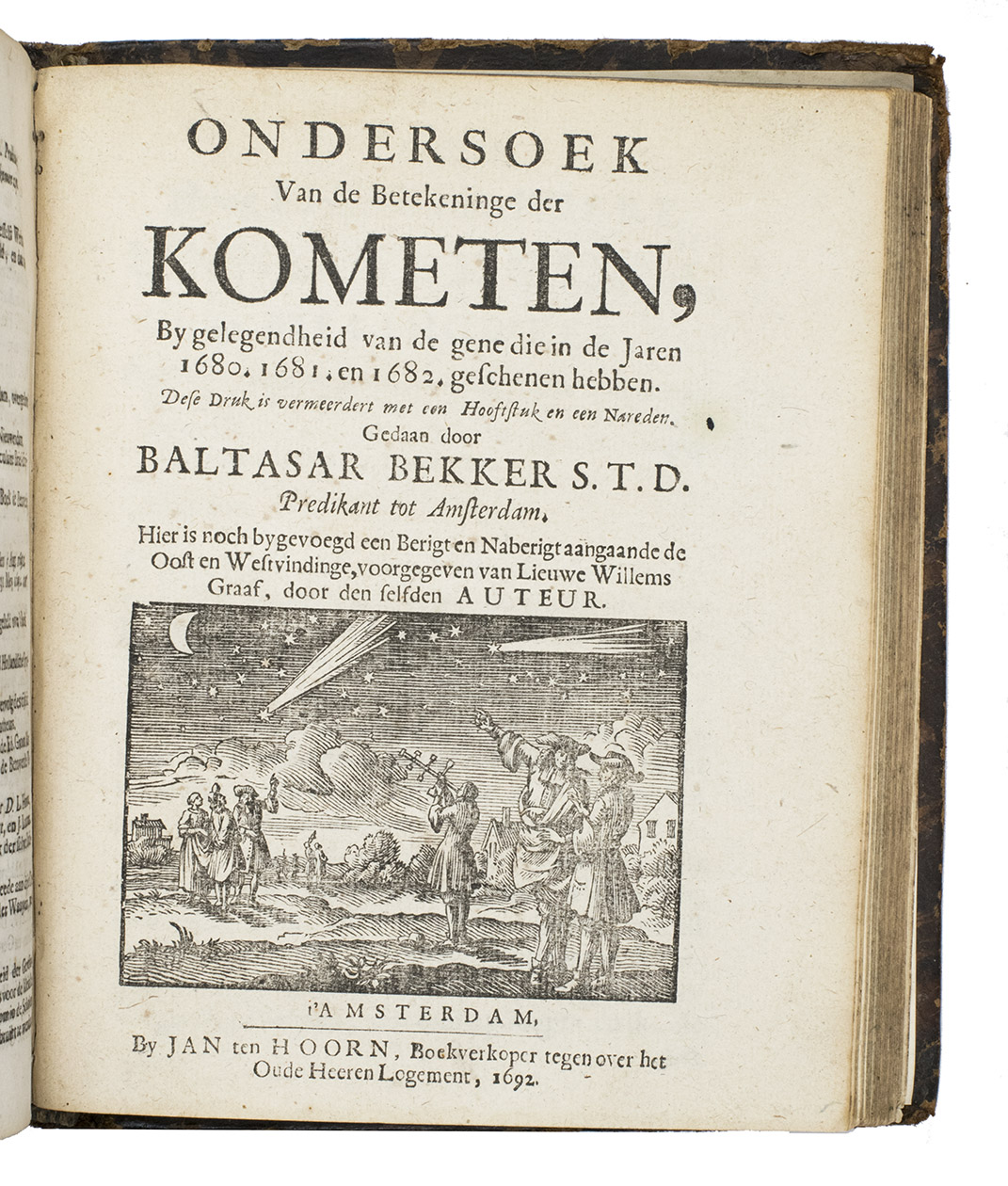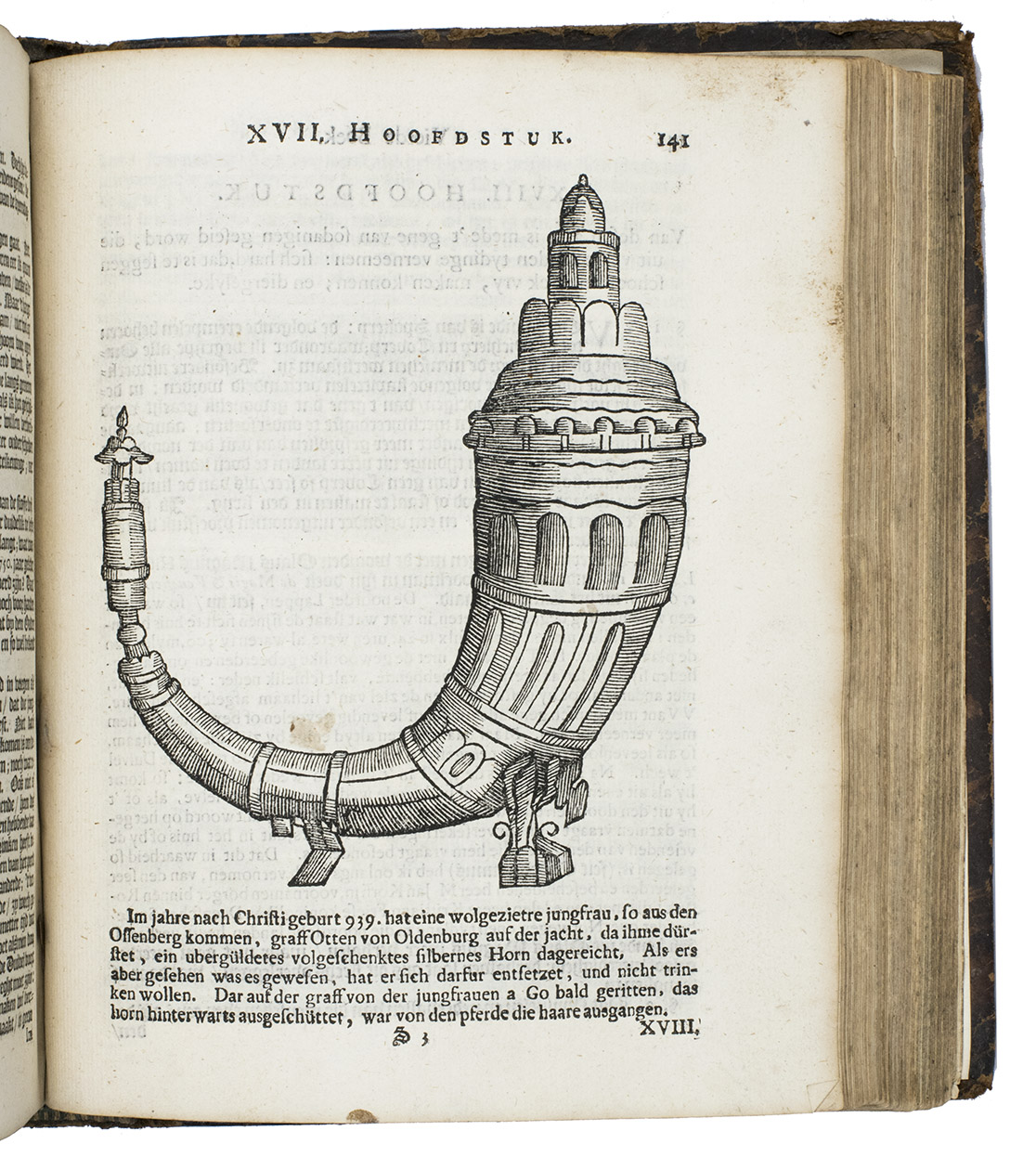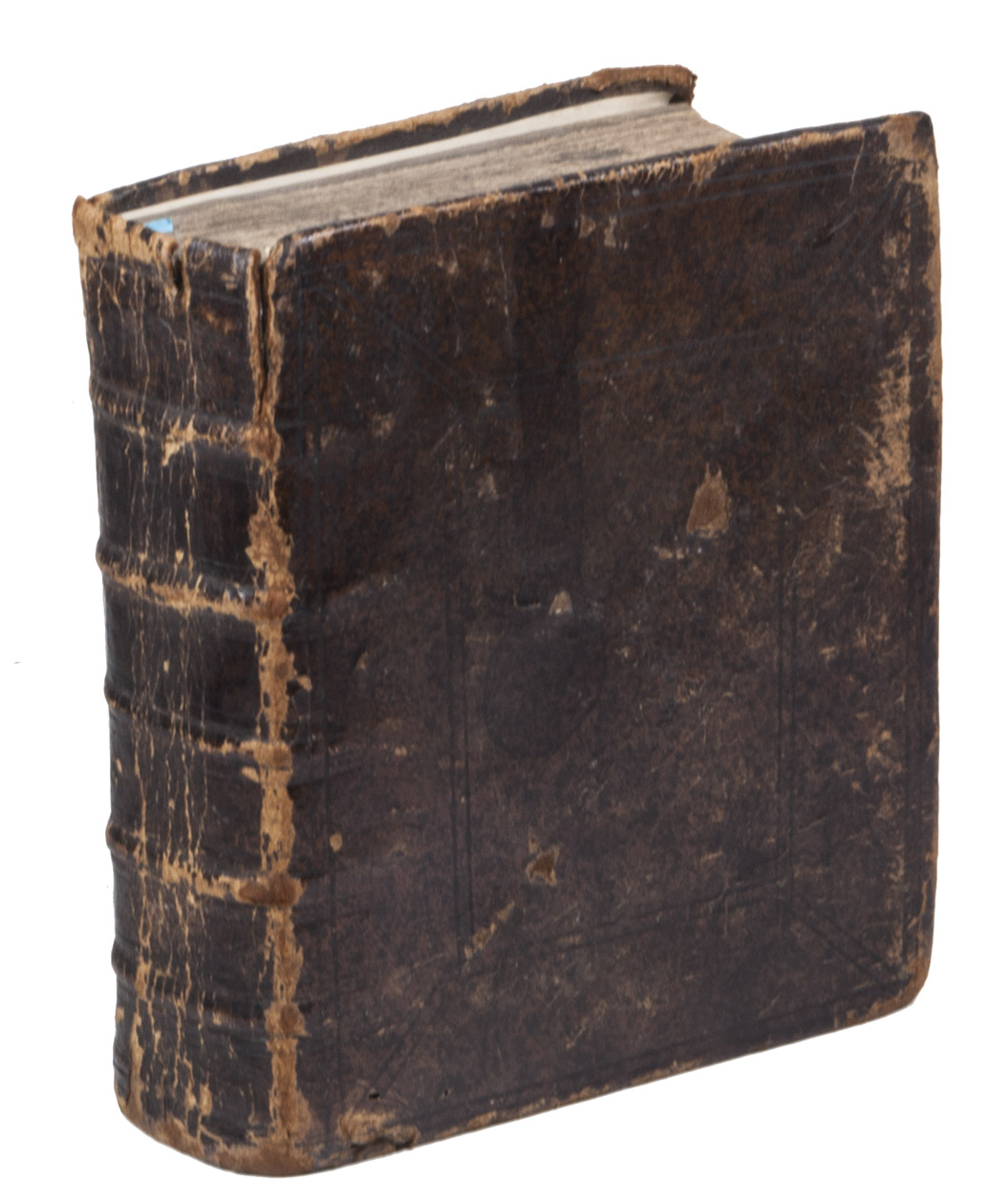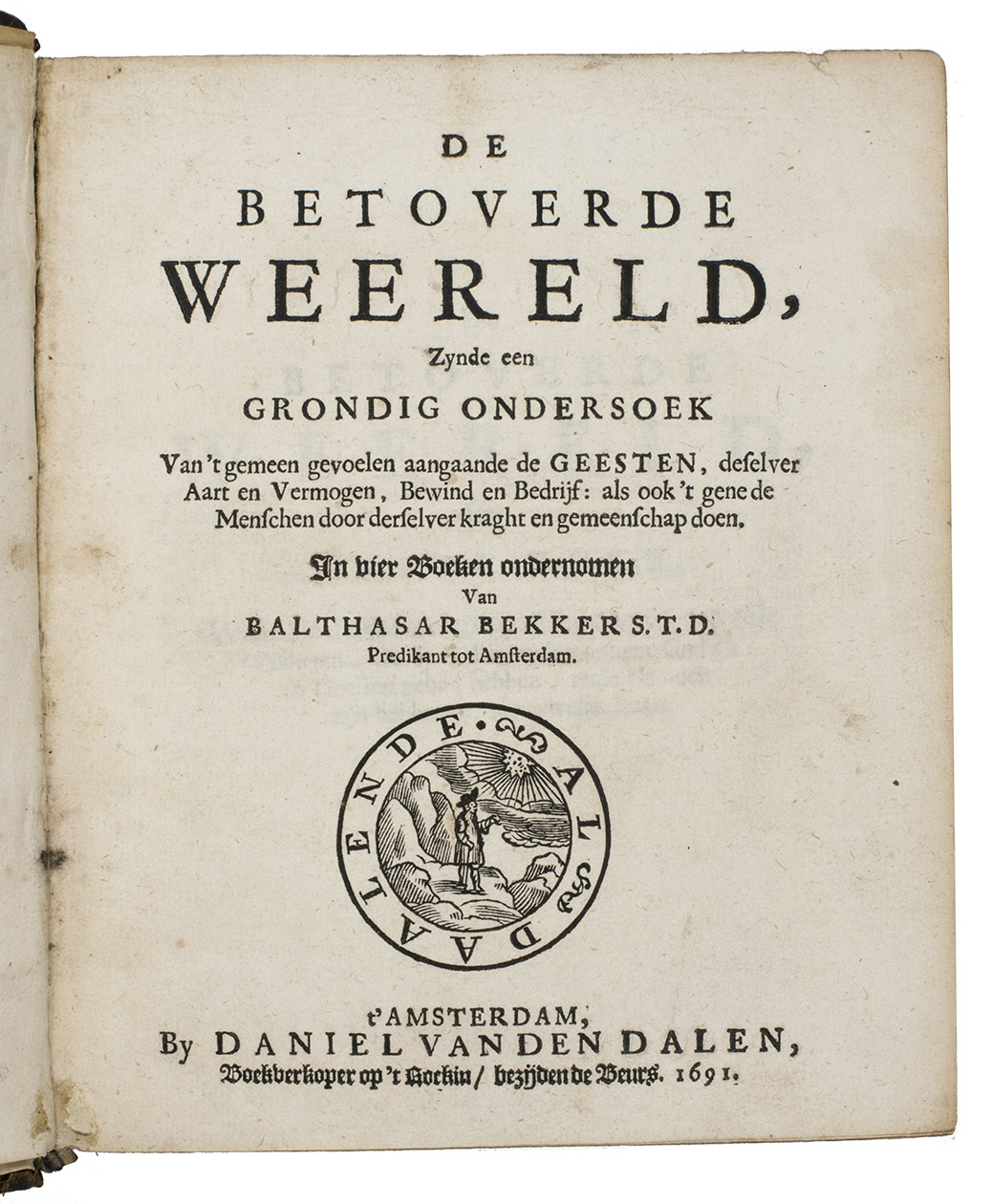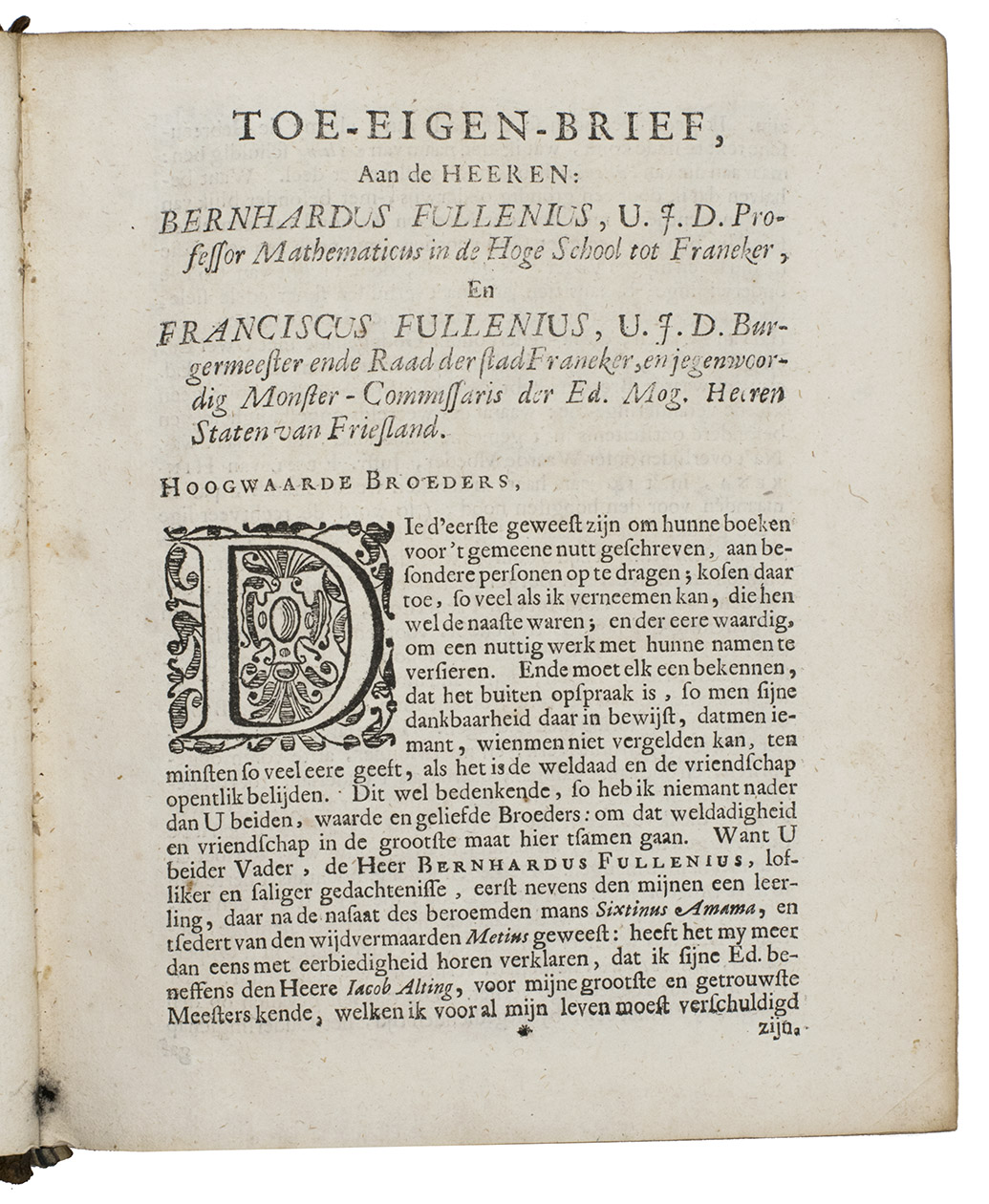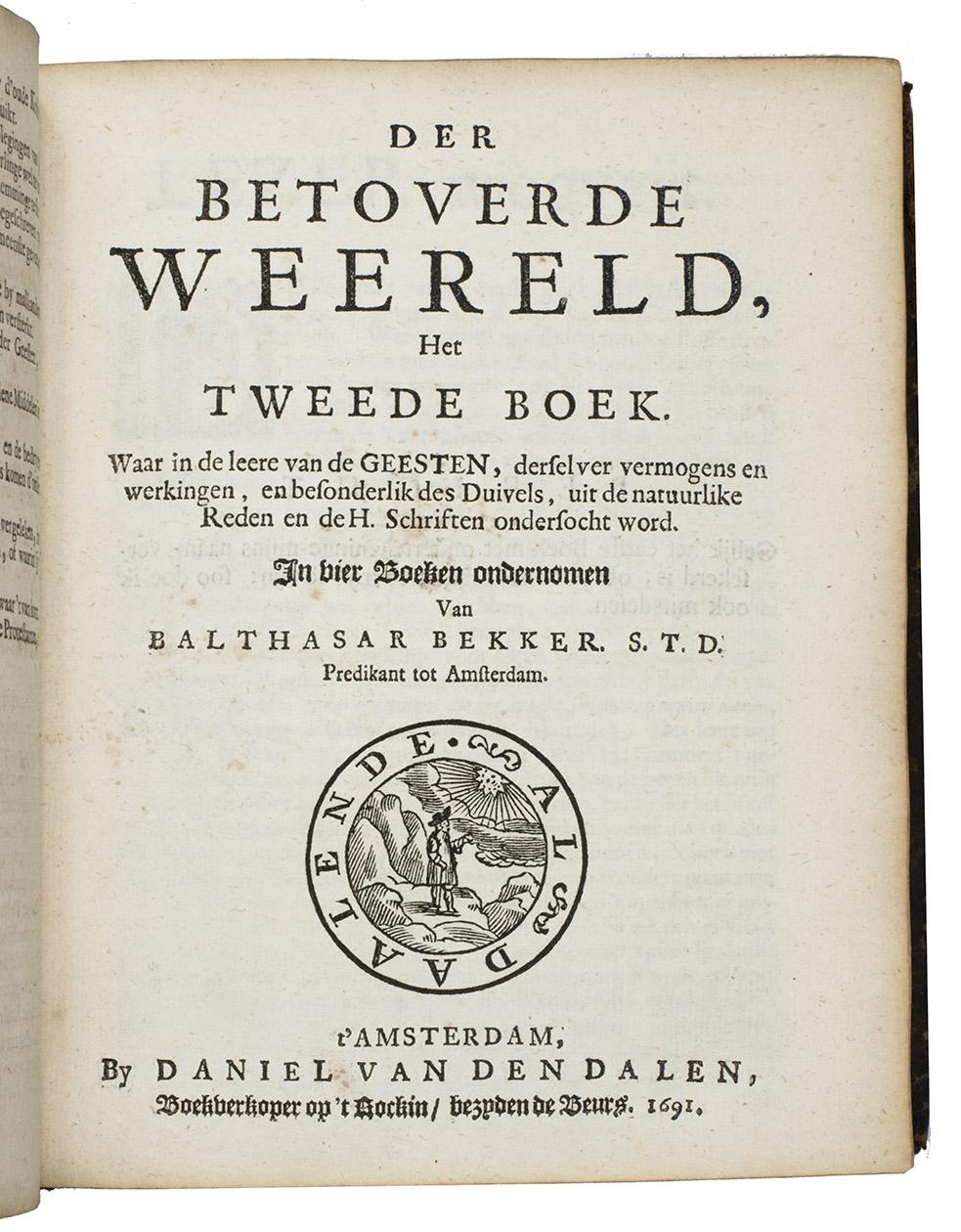BEKKER, Balthasar.
De betoverde weereld, zynde een grondig ondersoek van 't gemeen gevoelen aangaande de geesten, derselver aart en vermogen, bewind en bedryf: als ook 't gene de menschen door derselver kraght en gemeenschap doen. In vier boeken ondernomen.Amsterdam, Daniel van den Dalen, 1691-1693. With the woodcut printer's device of Daniel van den Dalen on the title-page of each book (part) and a full-page woodcut of the Oldenburg Horn.
With: (2) BEKKER, Balthasar. Ondersoek van de betekeninge der kometen, by gelegenheid van de gene die in de jaren 1680. 1681. en 1682. geschenen hebben.Including: Berigt aangaande 't uitvinden der lengte van Oost en West, voorgegeven van Liewe Willems Graaf.
Amsterdam, Jan ten Hoorn, 1692. 4to. 2 works in 1 volume, the first work in 4 parts. With a woodcut on the title-page, depicting a group of people doing astronomical research.2 works in 1 volume, the first work in 4 parts. 4to. Contemporary calf, blind-ruled frames on the boards. [18], 138, [2]; [8], 262, [2]; [8], 188, [4]; [6], 277, [3]; [8], 102, [18] pp.
€ 2,500
The second editions of two works written by the famous Balthasar Bekker (1634-1698), best known for his "indecent" work De betoverde weereld. Bekker was a Dutch reformed pastor and theologian, born in Friesland in 1634, who studied at Franeker and who preached in Amsterdam from 1679 to his death in 1698. Although De betoverde weereld brought Bekker fame, it also sparked a major scandal, causing him many difficulties. Many people voiced their disapproval in numerous pamphlets and in 1692 Bekker was removed from his office in Amsterdam by the synod of Alkmaar, because of heterodoxy.
In De betoverde weereld Bekker attempted to prove that the devil is unable to exercise any influence upon the destiny of mankind. By using Cartesian thought, Bekker concludes that the common notion of the devil having power in the natural world should be seen as a remnant of pagan religion and as superstition. This hypothesis relegated all stories of sorcery, witchcraft, ghosts and phantoms to the realm of fancy.
Our copy also includes a part of 32 pages called the Naakte uitbeeldinge, also issued separately, bound at the beginning of the third book. The Naakte uitbeeldinge contains a survey of the whole work.
De betoverde weereld is here bound with the enlarged 1692 edition of Bekkers treatise on comets and their meaning, a work of him that caused less polemical problems. It was first published in 1683 by Hero Nauta in Leeuwarden, but was reprinted in 1692. The work was reprinted by two different printers: one by Nauta in Leeuwarden, but also - as our copy - by the Amsterdam printer Jan ten Hoorn. In this treatise, Bekker takes a clear position against the apocalyptical meaning of comets. Although this work wasnt as controversial as Bekkers De betoverde weereld, it shows the sceptical character of the Amsterdam preacher who never took the "truth" as it was told him for granted. Both works therefore form part of 17th-century Dutch religious and scientific history, mirroring the views and opinions of people on these subjects.
With the certifying signatures of Bekker at the end of the preface of every part of his Betoverde weereld and an owner's inscription on the last endleaf dated 9 May 1712. Without the frontispiece portrait of Bekker included in some copies. Binding worn around the edges, slightly water stained throughout, some minor stains not affecting the text, but otherwise in good condition. Ad 1: Coumont B40.2; Hoogendoorn BEKB03.2; Van der Linde 16, 17, 19, 20; cf. Crowe, p. 41; Knuttel, Verboden boeken 53 (1691 8vo edition), p. X; Thorndike VIII, p. 583. Ad 2: Hoogendoorn BEKB02.3.1; Van der Linde 3 (note); cf. Van Sluis, 'Balthasar Bekker in 1683: kometen, reizen en de vroege verlichting', in: De Achttiende Eeuw (1998), pp. 125-139.
Related Subjects:
